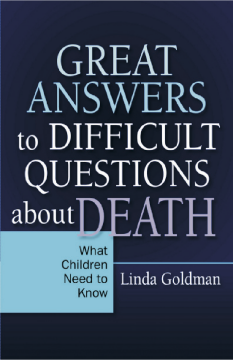
Additional Information
Book Details
Abstract
Death is never an easy subject for discussion and adults often struggle to find the right words when talking about it with children. This book explores children's thoughts and feelings on the subject of death and provides parents and other caring adults with guidance on how to respond to difficult questions.
The author explores some of the most common questions children ask about death and provides sensitive yet candid answers, phrased in a way that children will be able to understand and relate to. Each chapter is devoted to a particular issue, such as religious beliefs, coming to terms with terminal illness, and the fear of forgetting someone when they are gone. The book recognizes the emotions and reactions of children and family members and includes separate conclusions for parents and children.
This guide offers useful advice for parents and carers and will also be of interest to counsellors and other professionals working with children.
This book will be a welcome addition to any staff room, as a resource to which to refer when children are faced with death... The book provides helpful suggestions as to how children and their families may create ways of acknowledging the loss at home or in a special place associated with the departed. Schools will also find the ideas suggested in this book helpful if they need to put together a memorial service for a member of the school community... This book is likely to be helpful addition to the Educational Psychologist's bookshelf, both as a resource to recommend to others and for use in consultations with those involved in the repercussions caused by death.
Debate
Linda Goldman is a licensed counsellor and has a Fellow in Thanantology: Death, Dying, and Bereavement with an MS degree in counselling and Master's Equivalency in early childhood education. Linda worked as a teacher and counsellor in the school system for 20 years. She has written many articles on counselling and taught and lectured at various universities, most recently in the Graduate Program of Counselling at Johns Hopkins University in Baltimore, Maryland. Linda has a private grief therapy practice in Chevy Chase, Maryland, where she now lives. She is author of Children also Grieve: Talking about Death and Healing (Jessica Kingsley Publishers).
Questions range from the general (e.g., "What does dead mean") to the heartbreaking specific (e.g. "Why do all good people like my mom die young") The author strongly advocates honesty in order to secure trust in children, who will have future questions throughout their lives at various life stages. This should be on the ready-reference shelf for anyone who works with children; it is brilliant in its honesty, sensitivity, and brevity.
Library Journal, August 2009 and Healthy Books
Table of Contents
| Section Title | Page | Action | Price |
|---|---|---|---|
| List of figures and tables | |||
| SEADS: Minimum Standards for Supporting Crop-related Livelihoods in Emergencies | |||
| Chapter 1: How to Use this Handbook | |||
| Chapter 2: The Scope and Approach of SEADS | |||
| Chapter 3: SEADS Principles | |||
| Chapter 4: Initial Assessment for Crop-related Crisis Response | |||
| Chapter 5: Seed and Seed Systems | |||
| Chapter 6: Tools, Equipment, and Other Non-seed Inputs | |||
| Chapter 7: Crop-related Infrastructure | |||
| Chapter 8: Impact-oriented Monitoring and Evaluation | |||
| Annex A: Glossary | |||
| Annex B: References | |||
| Annex C: Elements of Team Competency | |||
| Annex D: Acknowledgments and Contributors | |||
| Annex E: Index |
